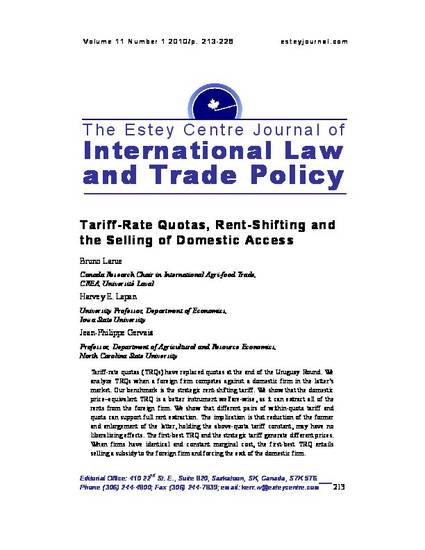
Tariff-rate quotas (TRQs) have replaced quotas at the end of the Uruguay Round. We analyze TRQs when a foreign firm competes against a domestic firm in the latter's market. Our benchmark is the strategic rent-shifting tariff. We show that the domestic price-equivalent TRQ is a better instrument welfare-wise, as it can extract all of the rents from the foreign firm. We show that different pairs of within-quota tariff and quota can support full rent extraction. The implication is that reduction of the former and enlargement of the latter, holding the above-quota tariff constant, may have no liberalizing effects. The first-best TRQ and the strategic tariff generate different prices. When firms have identical and constant marginal cost, the first-best TRQ entails selling a subsidy to the foreign firm and forcing the exit of the domestic firm.
Available at: http://works.bepress.com/harvey-lapan/50/

This is an article from Estey Centre Journal of International Law and Trade Policy 11 (2010): 213. Posted with permission.